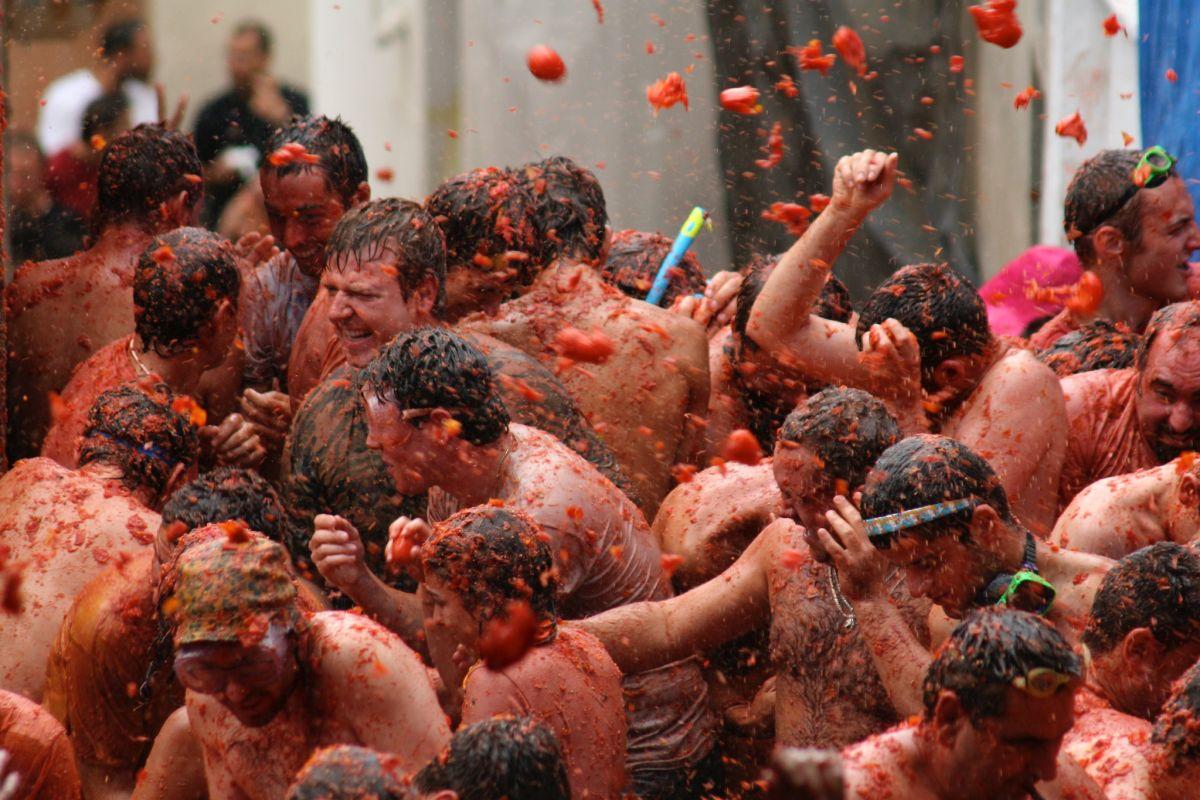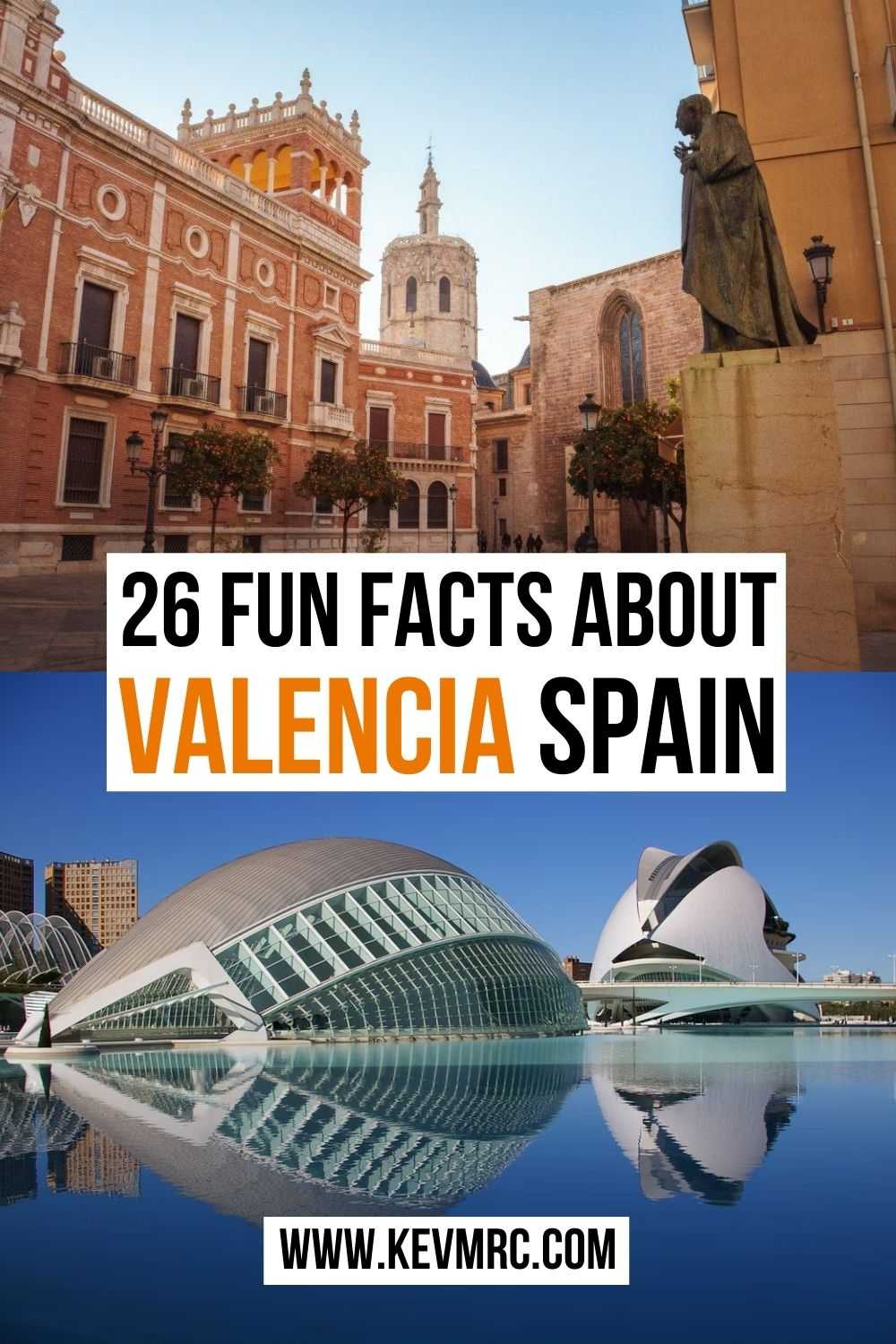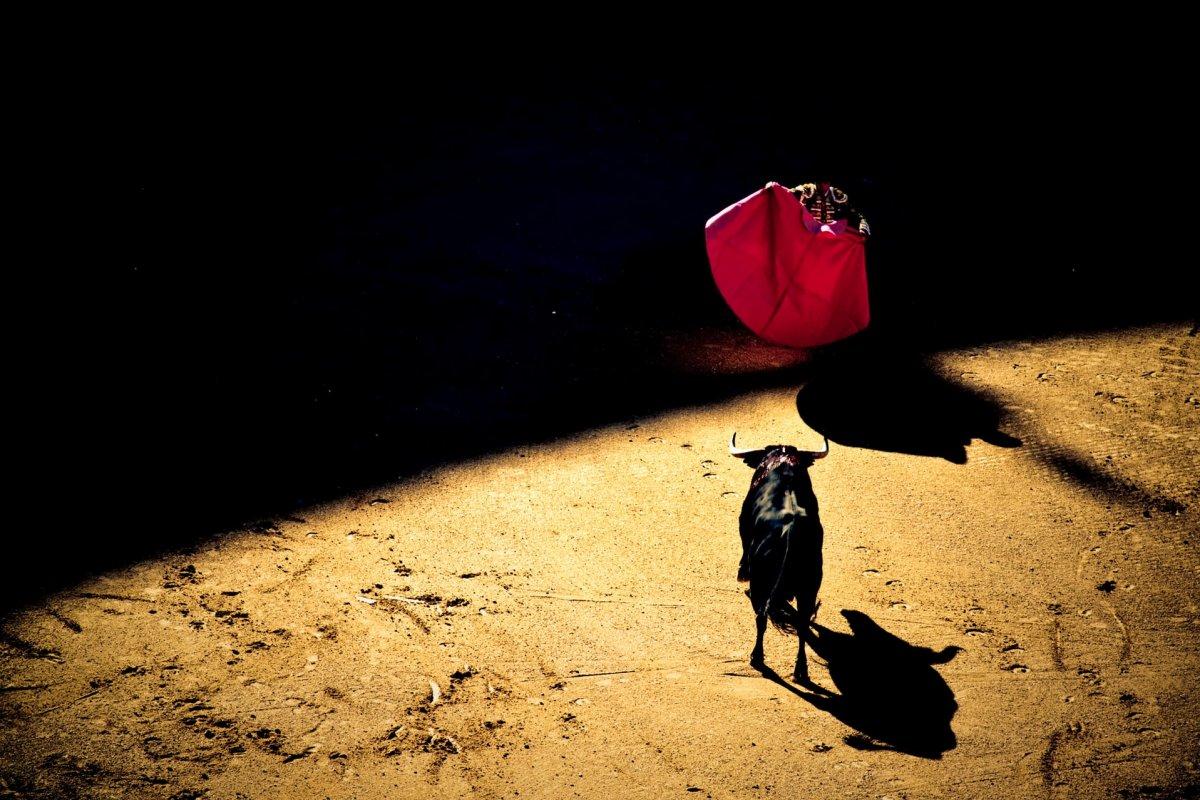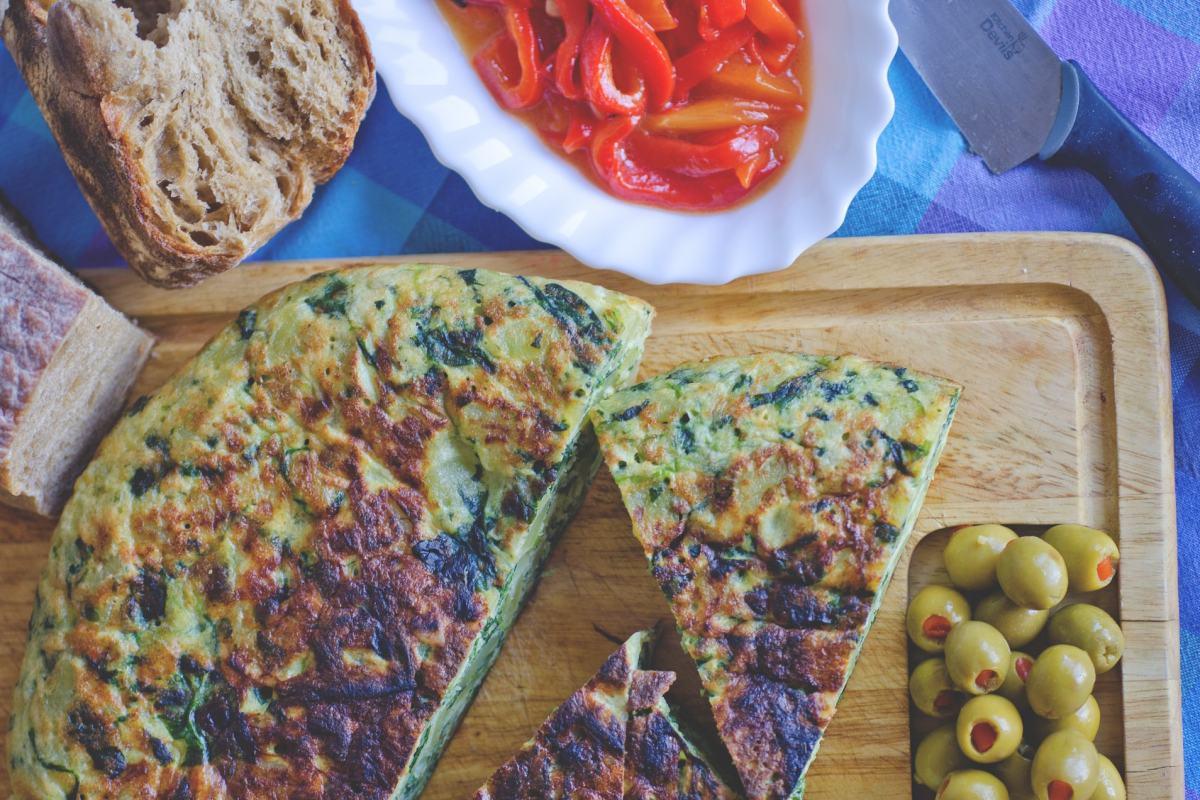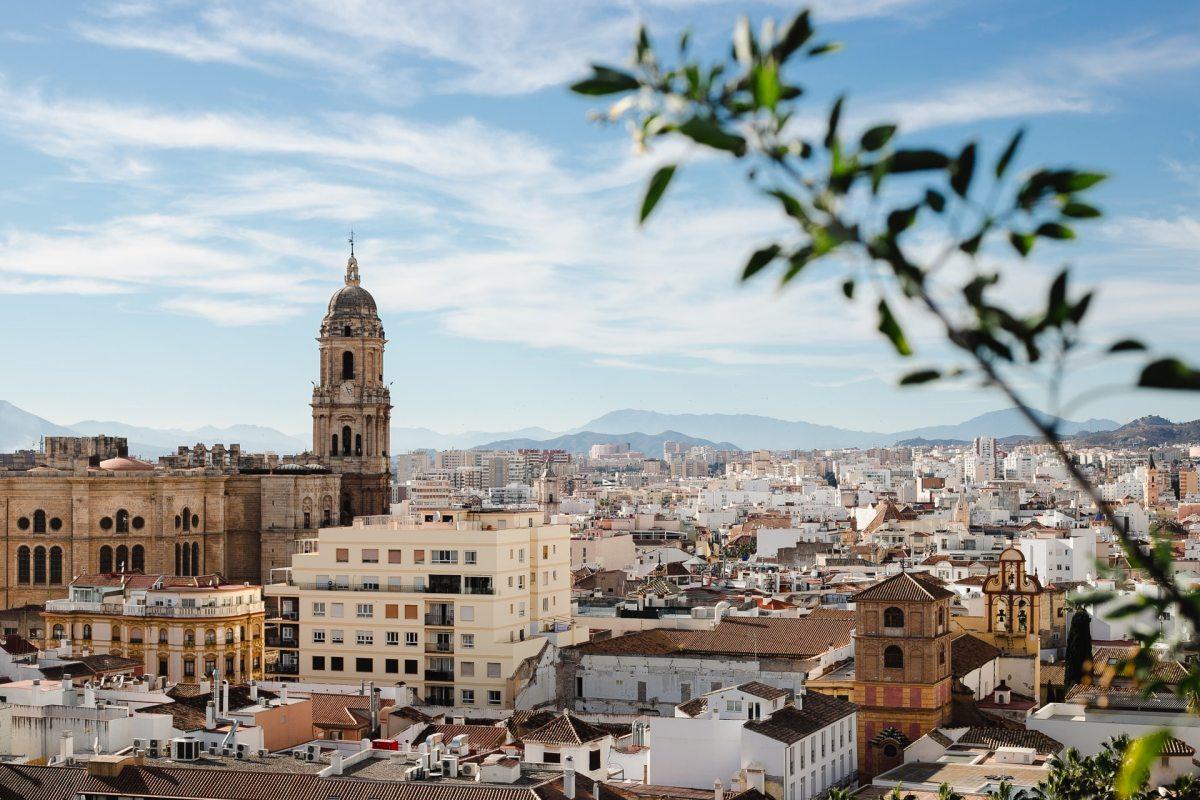26 Interesting Facts About Valencia, Spain (100% true facts)
Visiting Valencia in Spain means discovering an attractive city welcoming several million tourists every year. The city is famous for its historical center, for its cuisine but also for its unmissable City of Sciences and Art. Laid out around a park of more than 110 hectares, people can visit Valencia at any time of the year thanks to its very nice Mediterranean climate.
Did you know that Valencia was once Spain’s capital city? Or that the city features the world’s largest market?
Learn more through these 26 interesting facts about Valencia, Spain.
Facts on Valencia to Learn All About It
Ready to learn all about Valencia?
Facts are one of the best ways to learn more about something, and I personally love to read them! I’ve put together for you quite a bit of facts on Valencia; I’ve split them into 4 categories:
- The best Valencia facts
- Valencia fun facts
- Valencia facts for kids
- General facts of Valencia
Let’s dive in straight away with our first category!
The Best Valencia Facts
First things first, in this part of the list, you will find general Valencia facts that you might not know about:
1. Valencia was founded by the Romans in 138 BC
The Romans had a huge influence on Europe, and arguably on the history of the whole world. They were pioneers in a lot of areas, like architecture, agriculture, and even cuisine. Their language, Latin, is the ancestor of most of Western Europe’s current tongues.
In 138 BC, they founded the city of Valencia, on the East coast of Spain. The city was later seized by both the Visigoths and the Moors.
2. Valencia is the third largest city in Spain
Madrid, the capital, and Barcelona, the original, are by far the most populated cities in Spain, with respectively more than 6 million and more than 5 million inhabitants. Madrid gathers the most important buildings and has the Royal family, while Barcelona is very well known for the Sagrada Familia and its unique Catalan identity.
Valencia has nothing to be ashamed of though, as it comes 3rd in Spain with approximately 800,000 inhabitants.
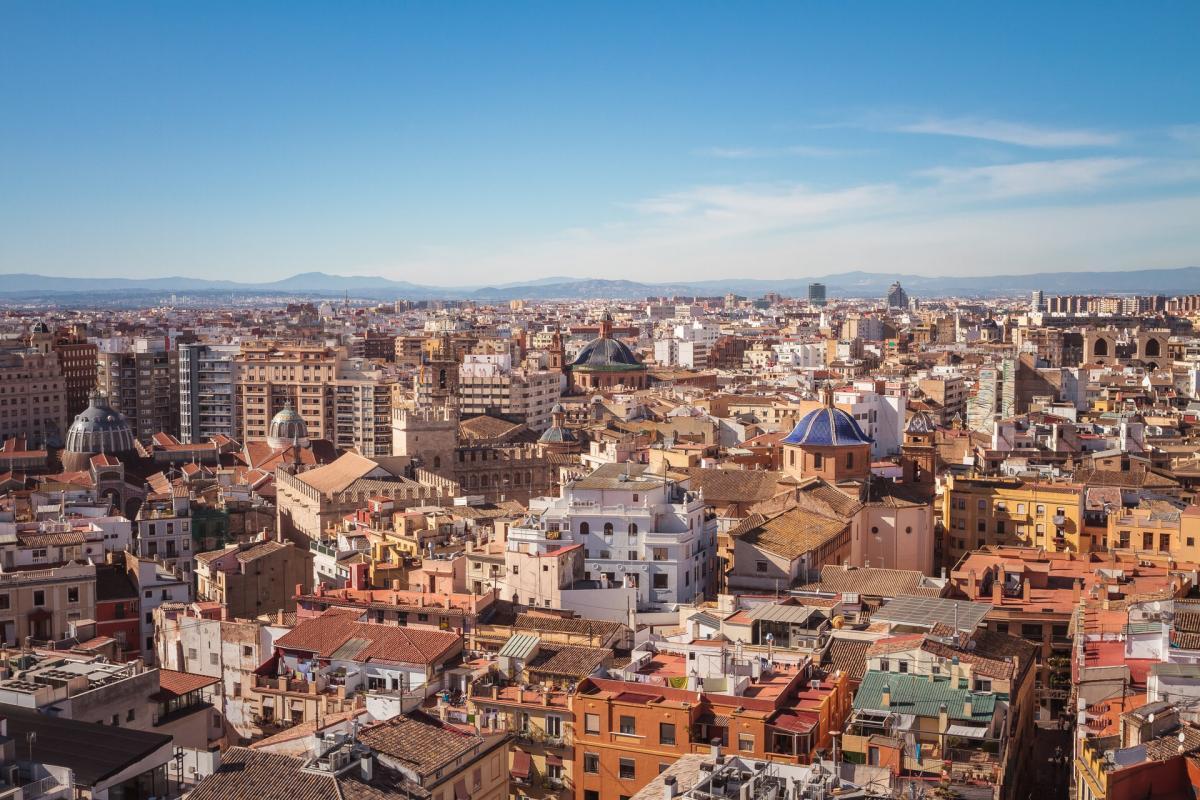
3. Half of Spain’s GDP is generated by… the port of Valencia
The strategic position is a very huge deal for the success of Valencia, economically speaking. Its port is indeed extremely important to the city, but also to the country as a whole.
It generates half of Spain’s GDP alone! It is the busiest cargo port in the Mediterranean, the 5th in Europe, and the 30th worldwide. The reason why it is so important is that half of the country’s work population is connected to it, directly or not.
4. Valencia’s Golden Age happened during the 15th century
The Kingdom of Aragon was very important during the Middle Ages. Today, there is still an autonomous community of Aragon.
Valencia was the most populous and rich city in the whole Kingdom, and its Golden Age happened during the 15th century. Culture and arts thrived, and the economy followed along. It grew so much that it actually became the largest city in the whole Iberian Peninsula.
5. The biggest market in Europe is in Valencia
Markets in general are very underrated as parts of history. They are very important, and sometimes single-handedly decided if a city is important or not. Some cities like Loulé, Portugal still have ancient, beautiful and to this day very visited markets.
The “Mercado Central”, the central market in Valencia, is the biggest market in Europe, one of the oldest ones, and the first in the world to offer online orders and home deliveries.
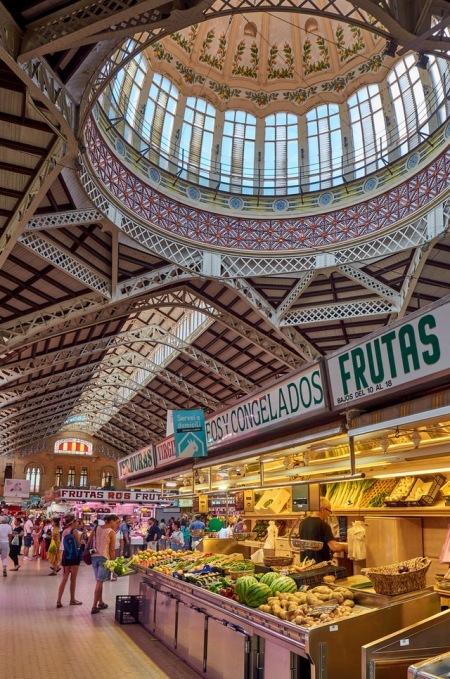
6. There are 3 UNESCO listed places in Valencia
“La Lonja de la Seda” (“Llotja de la Seda” in Valencian, “Silk Exchange” in English) is the most important as well as the most famous tourist attraction in Valencia. It is a Gothic-style building recognized as a World Heritage Site by UNESCO in 1996.
But do not forget about UNESCO’s list of Intangible Culture Heritage, because it also includes “Las Fallas Festival” and the Water Tribunal of Valencia.
7. Valencia is reputed for its architecture
Most people will tell you that the architecture is a sufficient reason to visit Valencia at least once. You can learn a huge part of Spanish history, but also simply enjoy its beauty.
One famous building is the City of Sciences and Art. It is very complex and looks futuristic. You might have already seen it if you watched either season 3 of Westworld or Tomorrowland.
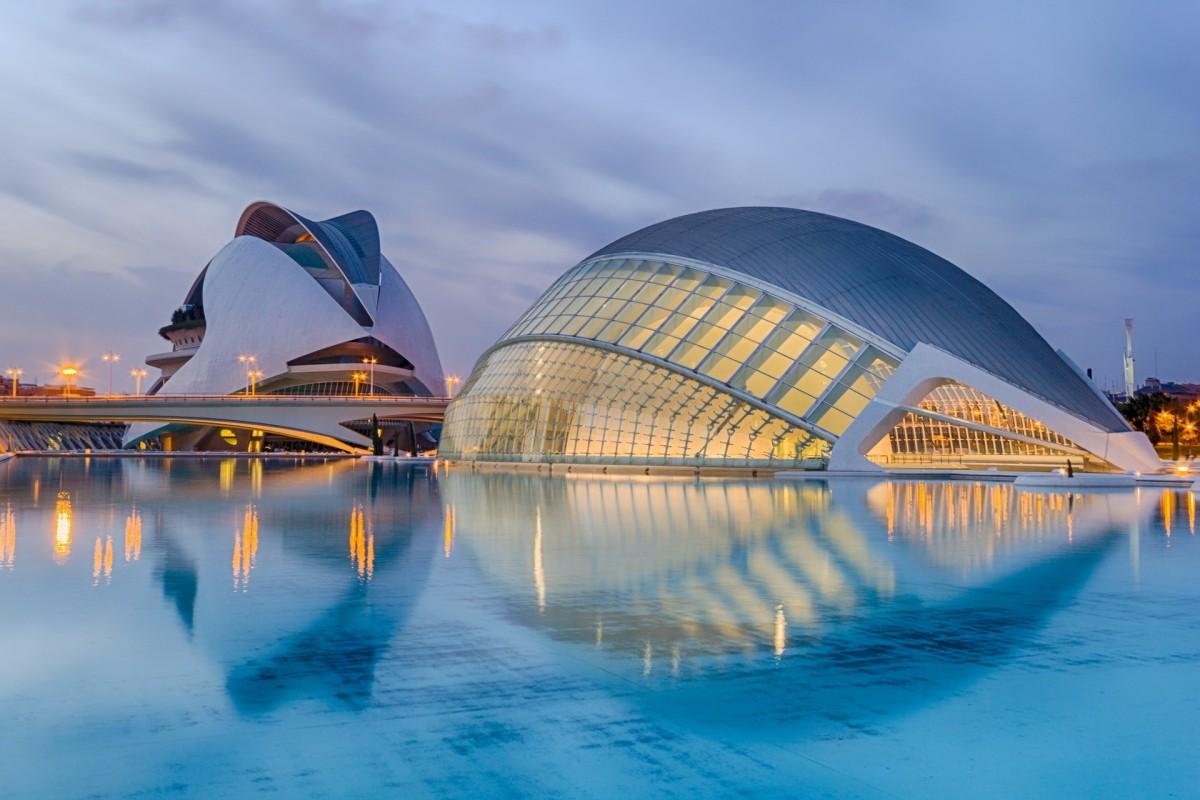
City of Sciences and Art
8. Valencia has its own cocktail: Agua de Valencia
“Agua” means “water” in Spanish, but be careful if you are in a bar, because some cocktails named “agua” do not have a single drop of water in it.
That is exactly the case for Valencia’s cocktail, “Agua de Valencia”. Everyone in the city likes it after a long day of work. If you want to make one yourself, you will need Cava (Spanish champagne), freshly squeezed orange juice, vodka, gin, and of course ice.
9. Another very popular drink in Valencia is “horchata”
Mexico has a famous beverage called “horchata”. It is a delicious rice or coconut-based drink that you can easily find in Mexico but also in the United States.
Valencia also has horchata, but it has nothing to do with the Mexican version. The Spanish horchata is made with tiger nuts and is appreciated by everyone, big and small. You can find homemade horchatas all around the city, and eat it with the sugary pastries “fartons”.
10. Valencia is famous for its flowers, love, and lights
Off the coast of Valencia, there is a small town named “Buñol”. There, every August, you can witness “La Tomatina”, which is a famous tomato fight, transforming the city into what looks like a bloodbath.
You can also find a lesser-known fight in Valencia… with flowers. The Flower Battle is organized every July and the city is filled with colorful and joyful people of all ages.
11. Joaquín Sorolla was born in Valencia
Joaquín Sorolla y Bastida (1863-1923) was a famous Spanish painter born in Valencia. His most famous works represent the people, the landscape, and the history of Spain. He focused a lot on social and historical topics, through portraits, monumental works, and landscapes.
A famous painting is “Sad Heritage”, depicting crippled children, victims of either syphilis or polio, in the city of Valencia. A polio epidemic indeed struck the city a few years earlier.
12. Lots of masterpieces were kept safe in Valencia
The Spanish Civil War was truly terrifying. The leader of the revolution, Francisco Franco, took control of the country for almost 40 years, in a dictatorial regime. Horrors have been committed, families have been torn apart, just like the country itself.
Because of this, some artistic masterpieces were in danger. Therefore, “Torres de Serranos”, an ancient gate of Valencia was used to protect several pieces like “Las Meninas”.
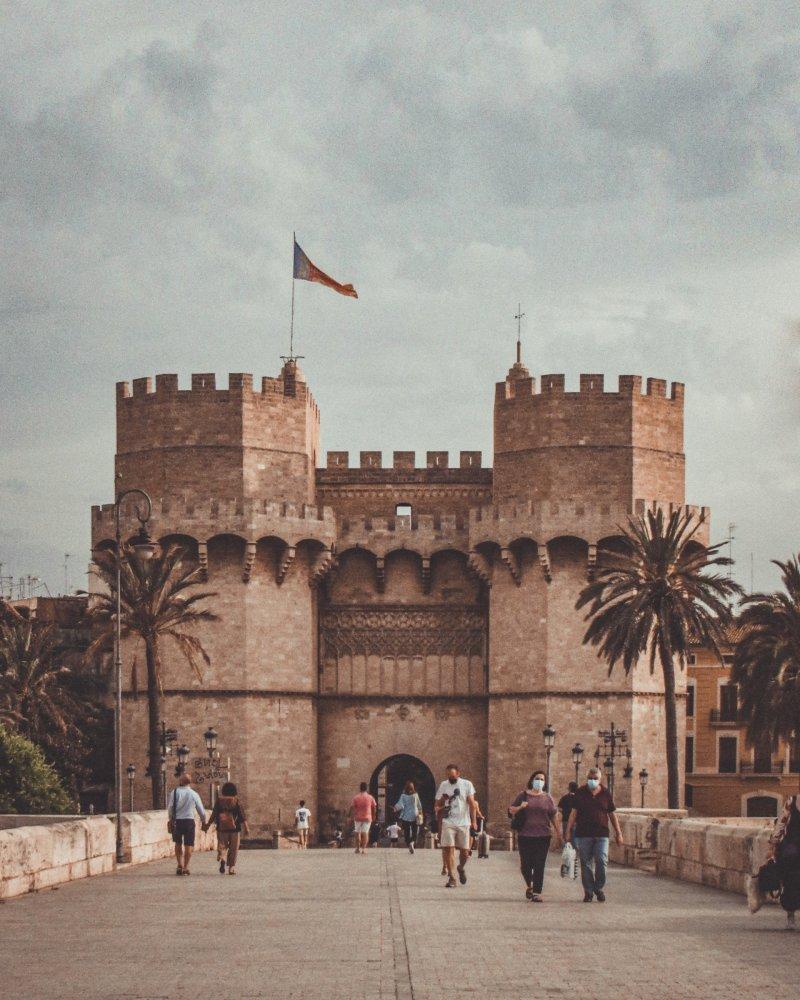
Torres de Serrano
13. Valencia has a local and a unique Valentine’s Day, just like Barcelona
In Barcelona, you won’t see anyone handing out roses or chocolates on February 14th. Valentine’s Day is actually celebrated on Saint George Day, on April 23rd.
The same happens in Valencia, where Sant Dionis Day is the city’s own Valentine’s Day. It happens on October 9th and there is a tradition for men to give women fruit-shaped marzipan sweets, wrapped in a silk handkerchief (“mocadorà”).
14. The first psychiatric hospital in the world was built in Valencia
Let’s be honest, psychiatry was not very known in the Middle Ages. Mental sickness was usually “cured” with exorcism, and ill people were treated very poorly. We now have the information and the tools to know that this was a terrible idea, but back then it was very hard to understand those kinds of illnesses.
Valencia helped psychiatry a ton, having the world’s first psychiatric hospital, and bringing a more humane approach to mental illness very early in history (1410).
15. American Football is very popular in Valencia
You probably know Valencia FC, one of the most successful soccer teams in Spain’s “La Liga”. What you might not know about though, is that Valencians are huge fans of American Football.
The city is so implied in it that it actually has 2 football teams: the Valencia Firebats and the Valencia Giants. When they clash, you should be around, the whole city is definitely heading to the game!
16. The Cathedral of Valencia is famous and beautiful
It is said that the Cathedral of Valencia is located exactly where the Temple of Diana stood. Although nothing about that is certain, what is most definitely true is that this cathedral is amazingly beautiful. It is a typical Gothic building, is very huge, and has what looks like a tiny version of the Colosseum on its side.
It has been given several names over the course of history, like “Iglesia Mayor”, “Iglesia de la Seo” and “Basilica Metropolitana”.
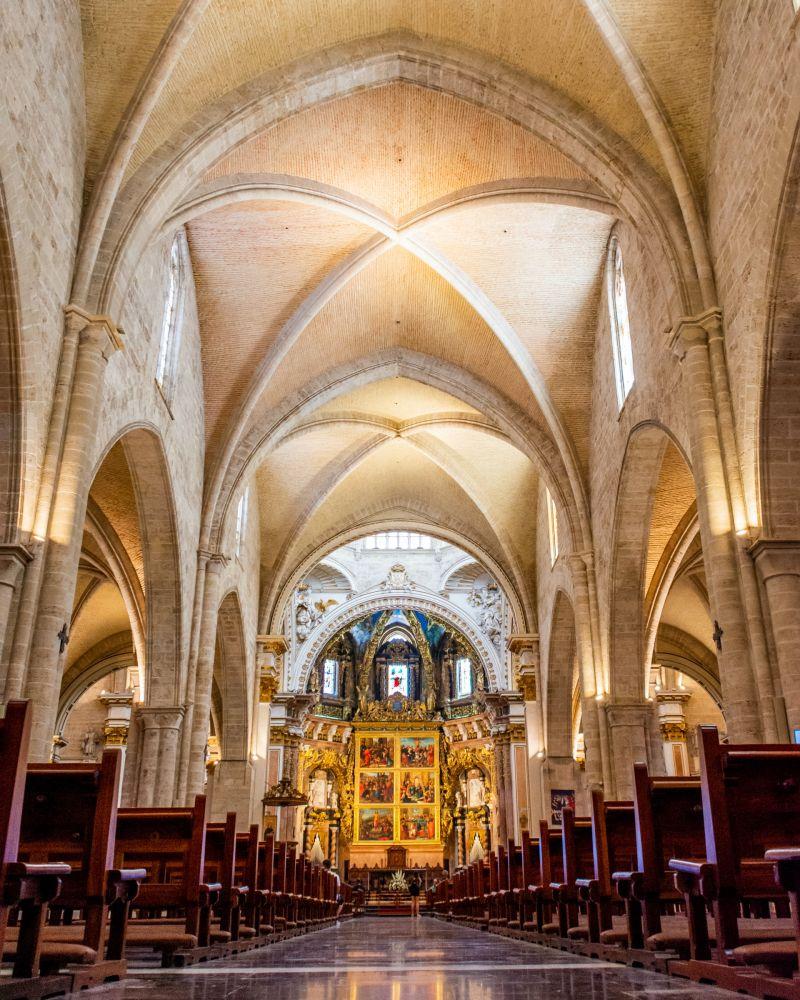
There you go, these were the general and interesting facts about Valencia, Spain.
Let’s head into the fun facts now:
Valencia Fun Facts
Every city has some hidden gems, some unusual facts, some fun stories that everyone wants to know.
For Valencia, I am going to give you 5 of them:
17. Valencia is supposedly home to the Holy Grail
The Holy Grail is a legendary treasure, important especially in Arthurian literature. No one really knows what it looks like, as it could be either a cup, a dish, or a stone. Some people say that it is a recipient in which Jesus’ blood was collected. What matters are its miraculous powers that provide eternal youth, happiness, and abundance.
It is said that the Holy Grail is kept in a chapel, inside Valencia’s cathedral.
18. Paella takes its roots in Valencia
“Paella” is the name of the wide and shallow pan used to cook this dish. It literally means “frying pan” in Valencia’s regional language. It is considered to be Spain’s national dish, though that is not official.
It was created in Valencia, with no seafood at all, but rather chicken, rabbit, and sometimes snails. To this day, you will still not see any seafood whatsoever in authentic Valencian paella.
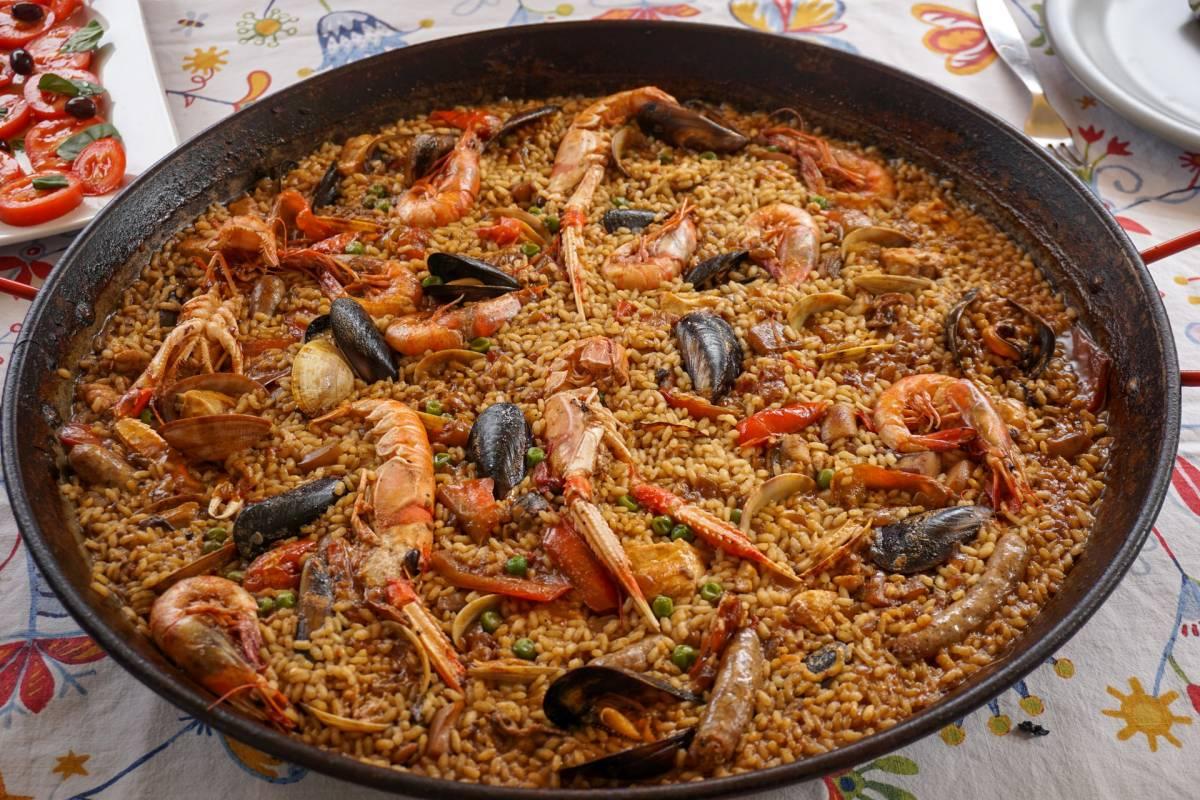
Read more: Discover more about Spanish food
19. There is a park that used to be a river in Valencia
Since Valencia is located on the coast, gazing over the Mediterranean Sea, it has unfortunately suffered lots of floods throughout its history. A very devastating one happened in 1957, and the streets were under 5 meters (16.4 feet) of water!
The Turia river was diverted around the outskirts of the city, and after lots of projects were presented, the city decided to turn it into a green space. Today, it is Turia park, the largest public park in Spain.
20. You can find the narrowest building in Europe in Valencia
This has got to be one of the most unusual records in the world! The narrowest building in Europe, and the second narrowest building in the world, can be found in Valencia. It is called “Tasquita La Estrecha”, and its facade is only 107 centimeters (42 inches) wide.
The reason for someone building a house that narrow is actually quite smart. Back then, property taxes were calculated according to the width of the facade… so 5 floors with a very small facade are perfect!
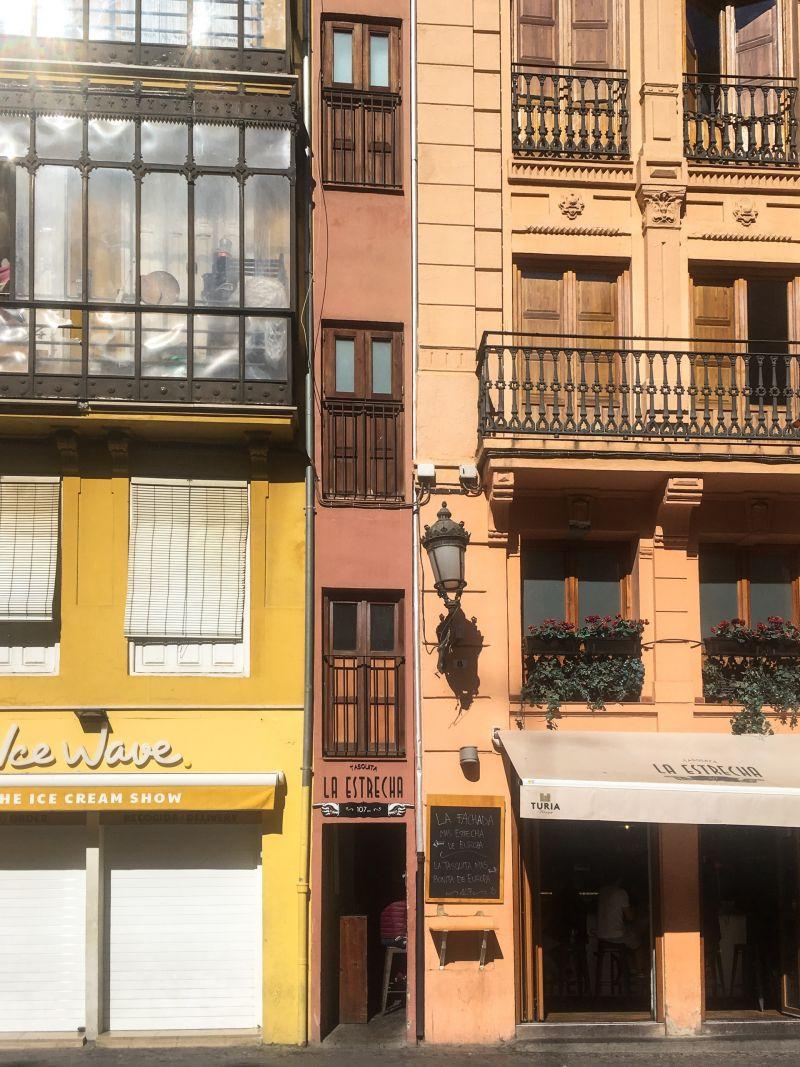
Tasquita La Estrecha
21. Valencian people really love their cats
If you like cats, do not wait any longer: book your trip to Valencia immediately. You can find them everywhere in the streets, in the parks, and in the old town. The best place is the Botanical Garden, where you can see more than 50 cats.
Don’t worry about anything, they are very friendly, and a group of volunteers takes care of them every day. They are living a truly beautiful cat life!
So there you have them, the fun facts about Valencia Spain!
It is now time to dive a bit deeper into general and historical information, ideal for kids:
Valencia Facts for Kids
Young people will always be curious. This is why I dedicated a section of these facts for them, the Valencia facts for kids:
22. Valencia was the capital of Spain
Just like for a lot of other facts about Spain, the Civil War had a huge part in Valencia’s history. The country and the people were divided and sunk into chaos.
Because of that, Valencia was in the spotlight for a few years though. It became the official capital of Spain during the 1930s, for a couple of years. If you want to see Valencia become a capital again, head there in 2022: it is about to become the World Design Capital.
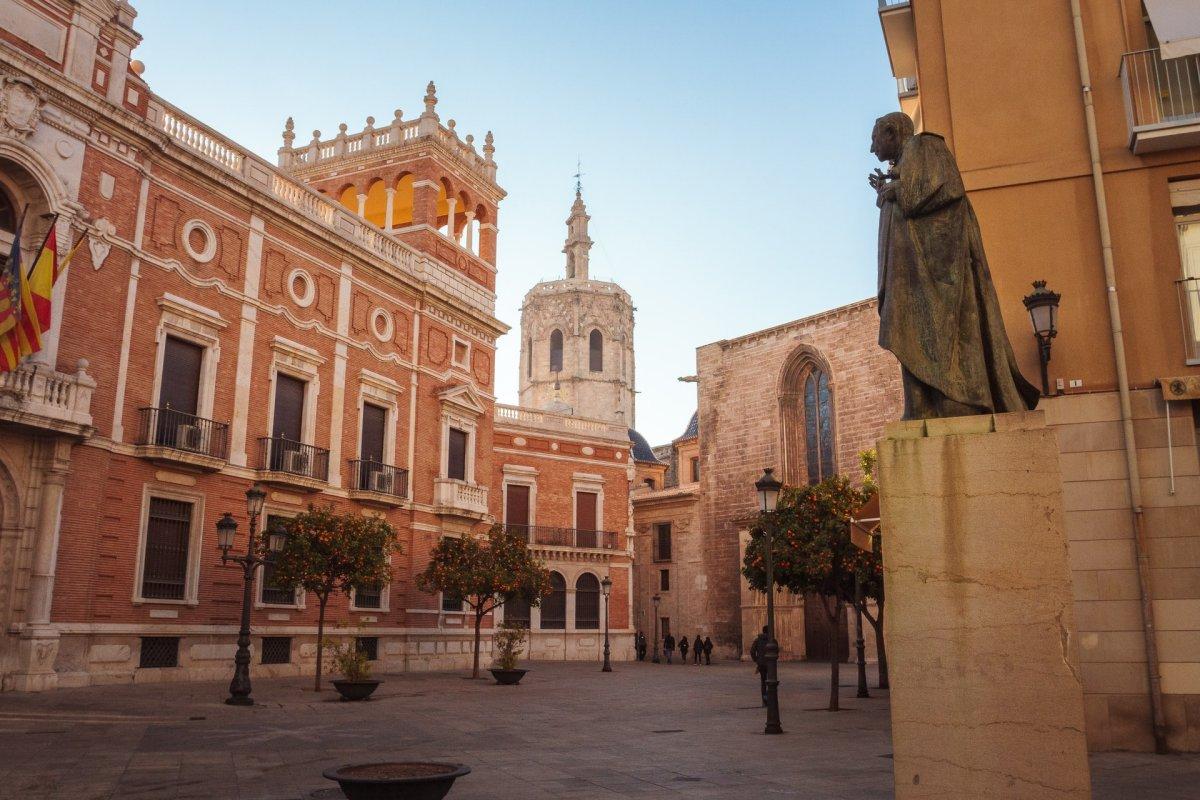
23. The symbol of Valencia is a bat
Every old city has a heraldic symbol. Heraldry is actually such a wide topic that people spend their entire lives studying it. It started with knights painting their colors on their armors, for people to recognize them.
In Valencia, the heraldic symbol is a bat. It is said that the Moors were planning a surprise attack during the Reconquista. However, they bothered a colony of bats, who woke up the Christians, which later won the battle.
24. The word “Valencia” has Roman origins
The name “Valencia” comes from the word “Valentia”, in Roman. It means bravery, valor, and strength.
Valor was a huge deal in Roman times. They had a specific practice of recognizing a soldier’s valor after a war. Roman soldiers would happily give their life away if they would be remembered as valorous and brave.
25. There are two official languages in Valencia
Valencia shares some similarities with Barcelona. First, there is the unique Valentine’s Day of the city which we already talked about. But there is more since there are two official languages in both cities. In Barcelona, it is Spanish and Catalan, and Valencia has Valencian.
In the region, people can speak and understand both languages very easily, though Spanish is still the predominant one, mostly because of demographic and political pressures in the past.
26. The first printing in Spain happened in Valencia
Tons of books and more generally papers are being printed all around the world at this very moment. That was obviously not always the case, as the printing process is relatively recent, and takes its roots in Europe.
The first printed book in Spain was reproduced in Valencia, in 1474. It is a collection of 45 poems, called “Trobes en lahors de la Verge Maria”.
And that’s it for the Valencia Spain facts. Hopefully, you will all have learned something new!
If you want to learn more about the city, keep reading, I still have other facts for you:
General Facts of Valencia
You’ll find below a few general facts of Valencia, to learn more about this Spanish city:
- Name: Valencia (Spanish & English) / València (Valencian)
- Province: Valencia
- Region: Valencia
- Land area: 134.65 km² / 51.99 sq mi
- Population: 801,000
- Name of inhabitants: Valencians / Valencianos
- Website: Valencia
Valencia Flag
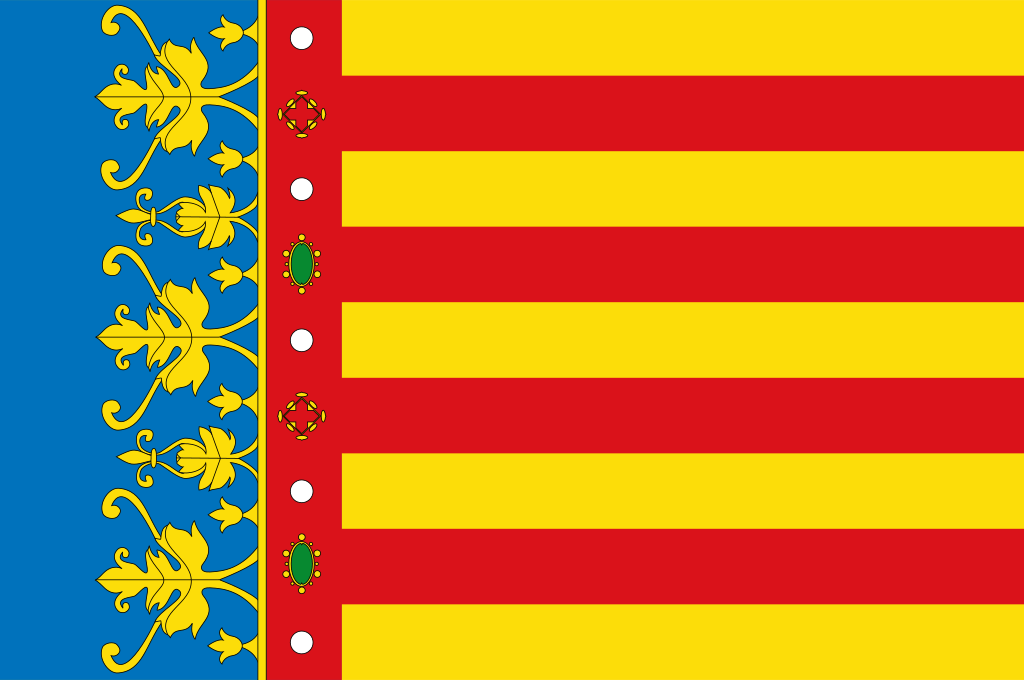
More Facts!
Did you like these facts?
If yes, then here are more facts about Spain, I’m sure you’ll love reading them!
Here’s the main guide of the best Spain facts 👉 All the Facts about Spain
Check out these facts by city/region:
- Facts about Madrid
- Facts about Catalonia
- Facts about Bilbao
- Facts about Barcelona
- Facts about Granada
- Facts about Malaga
- Facts about Seville
- Facts about Castilla la Mancha
Or these Spain facts by topic:
- Facts about Christmas in Spain
- Facts about la Semana Santa in Spain
- Facts about religion in Spain
- Facts about schools in Spain
- Facts about Spanish food
- Facts about the Spanish language
- Facts about bullfighting in Spain
- Facts about sports in Spain
- Facts about music in Spain
Or click here to see ALL the facts up on the blog! Spoiler alert: there’s A LOT of them.
The Full List of 26 Valencia Facts
- Valencia was founded by the Romans in 138 BC
- Valencia is the third largest city in Spain
- Half of Spain’s GDP is generated by… the port of Valencia
- Valencia’s Golden Age happened during the 15th century
- The biggest market in Europe is in Valencia
- There are 3 UNESCO listed places in Valencia
- Valencia is reputed for its architecture
- Valencia has its own cocktail: Agua de Valencia
- Another very popular drink in Valencia is “horchata”
- Valencia is famous for its flowers, love, and lights
- Joaquín Sorolla was born in Valencia
- Lots of masterpieces were kept safe in Valencia
- Valencia has a local and a unique Valentine’s Day, just like Barcelona
- The first psychiatric hospital in the world was built in Valencia
- American Football is very popular in Valencia
- The Cathedral of Valencia is famous and beautiful
- Valencia is supposedly home to the Holy Grail
- Paella takes its roots in Valencia
- There is a park that used to be a river in Valencia
- You can find the narrowest building in Europe in Valencia
- Valencian people really love their cats
- Valencia was the capital of Spain
- The symbol of Valencia is a bat
- The word “Valencia” has Roman origins
- There are two official languages in Valencia
- The first printing in Spain happened in Valencia
Share the knowledge! Click on the buttons below to share these facts with your friends, and help them learn more about the world 🙂
Pin this to Pinterest!
Enjoyed this guide? Then help a fellow traveler and pin it! They'll most definitely love you for it, 100% guarantee.
